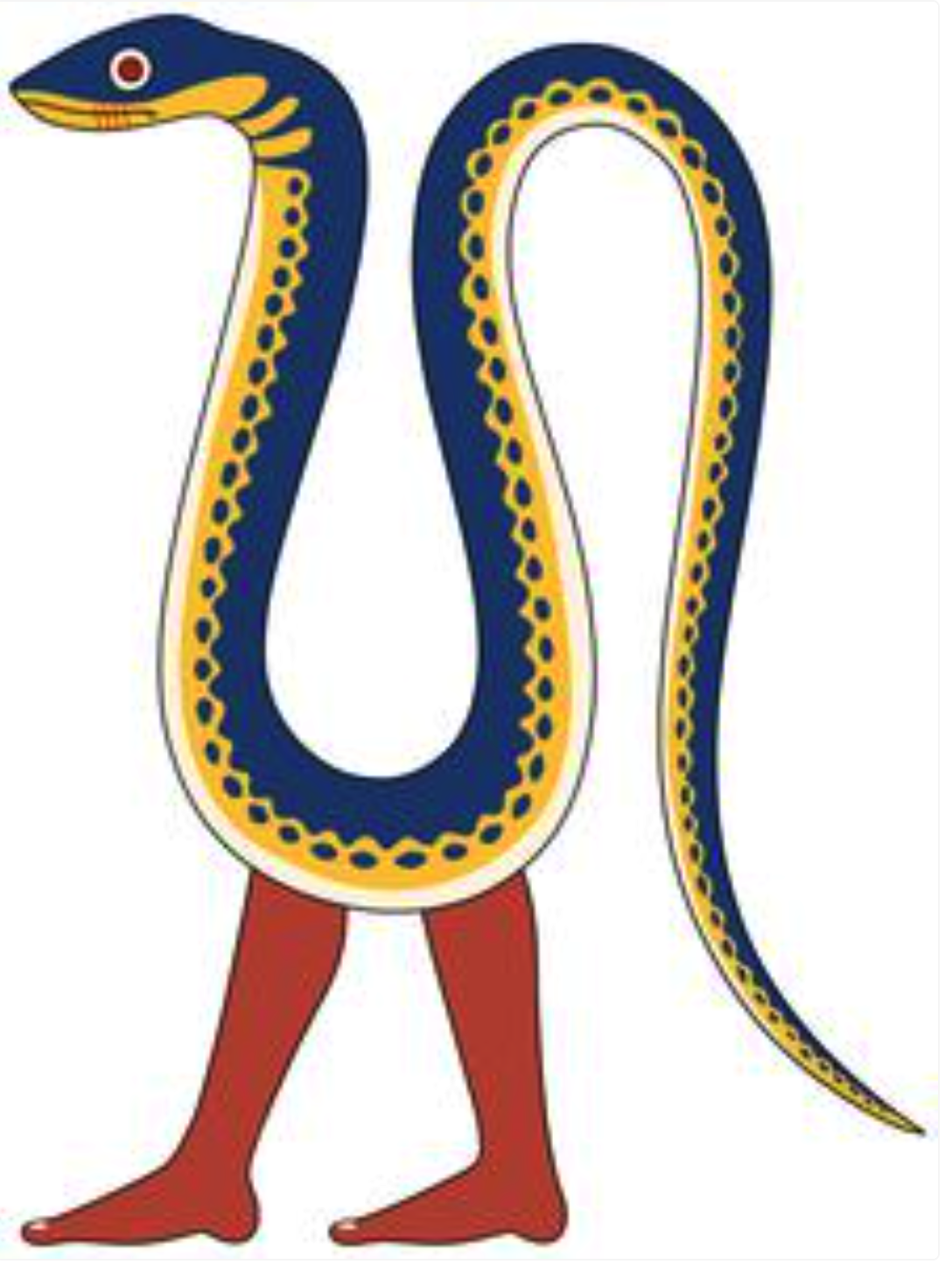Did the ancient Egyptians see any humor in this?
-
Did the ancient Egyptians see any humor in this? This is Nehebkau, the primordial snake god... often drawn as a snake with people feet. More than anything else it's things like this that let me know that I just don't understand their mythology or culture much at all.

-
myrmepropagandistreplied to myrmepropagandist last edited by
Maybe it's a bit like baseball mascots? Deeply silly, but also kind of serious?
-
tillian 🇰🇿🦊:anarchism:replied to myrmepropagandist last edited by
@futurebird i thought that they were into the furry stuff but the artistic theory was...limited at the time
-
Riley S. Faelanreplied to tillian 🇰🇿🦊:anarchism: last edited by
@mynameistillian Hieroglyphic Egyptian uses feet as a couple kinds of indicators. It might be that they're just there as a grammatic particle.
Or maybe it works the other way around, and Egyptians would have had trouble worshipping a deity without feet, so of course a powerful deity had to have them.
-
GhostOnTheHalfShellreplied to Riley S. Faelan last edited by
@riley @mynameistillian @futurebird
In several cultures, certain features would indicate supernatural nature.
Feet seem just as good for that task (?)
-
Riley S. Faelanreplied to GhostOnTheHalfShell last edited by
@GhostOnTheHalfShell Egyptians put feet on all sorts of mundane humans, though. But they also had other meanings; a pair of feet could indicate addition or subtraction, depending on their direction, for an example. @mynameistillian @futurebird
-
myrmepropagandistreplied to Riley S. Faelan last edited by
@riley @GhostOnTheHalfShell @mynameistillian
It could just be that... but snakes famously the creature with no legs having legs ... that's a timeless joke imo.
-
Riley S. Faelanreplied to myrmepropagandist last edited by
@futurebird Maybe this one is not a snake but a lizard? Lizards are known for having legs (unless they happen to be legless lizards).
-
Riley S. Faelanreplied to Riley S. Faelan last edited by
@futurebird Maybe it's a symbol of the deity's power. Not a god who can create such a heavy rock that he can't lift it, but one who can be a legless reptile while also having legs.
-
John Maxwellreplied to myrmepropagandist last edited by
@futurebird @riley @GhostOnTheHalfShell @mynameistillian - Well, but those are the very best jokes; the ones where it just sort of spontaneously manifests, instead of someone deliberately making it.
-
@futurebird @riley @GhostOnTheHalfShell @mynameistillian "Look! The rules of punctuation require us to put feet on a snake!"
-
Tor Iver Wilhelmsenreplied to myrmepropagandist last edited by
@futurebird @riley @GhostOnTheHalfShell @mynameistillian In Genesis, the snake is cursed to crawl on the ground, so presumably it had legs when it tempted Eve in that mythology at least.
-
Riley S. Faelanreplied to Tor Iver Wilhelmsen last edited by
@toriver Egypt had its own rich mythology before the Mesopotamian one got built, though. There was some meme exchange, of course, but I don't think Egyptian lore had a recognisable counterpart to the Hebrew Genesis. @futurebird @GhostOnTheHalfShell @mynameistillian
-
Riley S. Faelanreplied to Riley S. Faelan last edited by
@toriver I started to think about the historic ordering, and now I'm not sure that the Egyptian lore predates the Mesopotamian one, only that the written Egyptian lore predates the written Mesopotamian lore. But before writing arose, Mesopotamia had cities before Egypt.
Nevertheless, early Egyptian myths seem to have developed relatively independently from the early Mesopotamian ones.
-
Riley S. Faelanreplied to GhostOnTheHalfShell last edited by
@GhostOnTheHalfShell By about the beginning of the CE, washing another being's feet was apparently a recognised symbol of self-deprecation in Roman Mesopotamia, and possibly, broader Eastern coasts of the Mediterranean Sea. I don't think I haven't run into specific evidence for this custom in Egyptian tradition so far, but could it be that the snake deity had to have feet so that worshippers could wash them?
-
myrmepropagandistreplied to Riley S. Faelan last edited by
@riley @GhostOnTheHalfShell @mynameistillian
Wouldn't it be more elegant to simply have a human form for that?
-
Riley S. Faelanreplied to myrmepropagandist last edited by
@futurebird Or maybe possess the High Priest who, conveniently, already had feet, for the duration of the feet-washing ceremony?
FWIW, I think Nehebkau ended up having a mostly human body plan by the last centuries of the Egyptian old theology, but I really can't say if it had a theological significance, or if it's just that the canonical depiction shifted over time.
